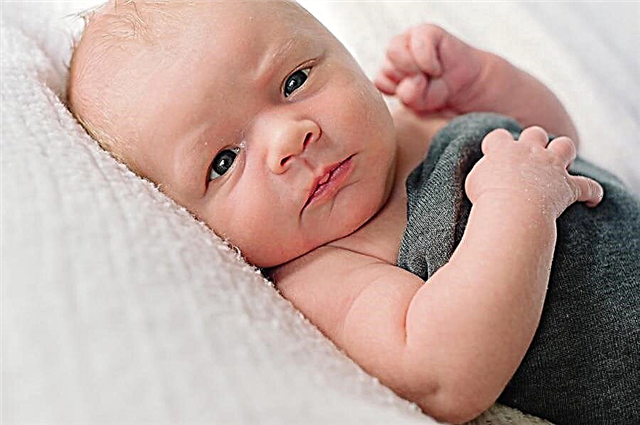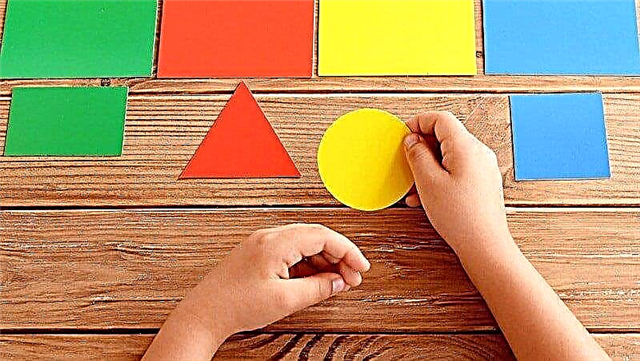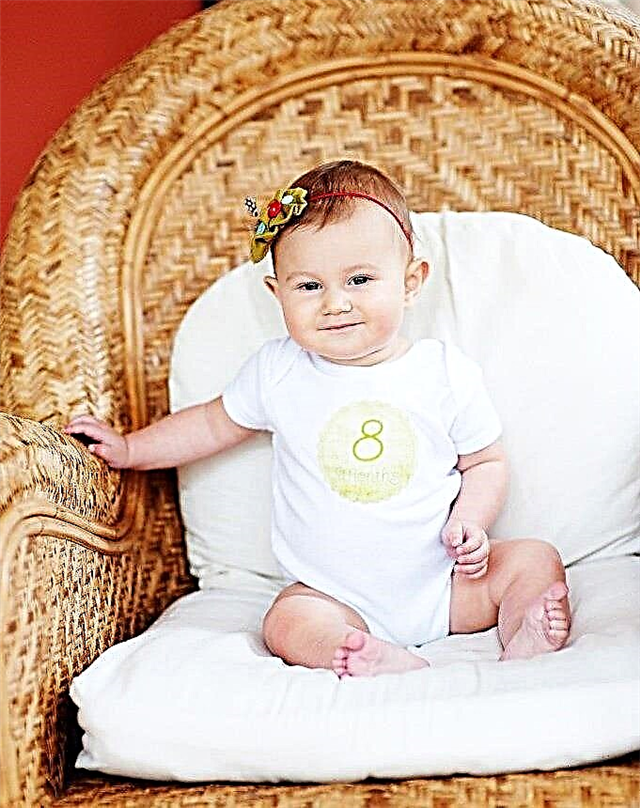If a child stands on tiptoe, walks on tiptoe, many parents mistake the habit for play. However, improper positioning of the leg, combined with the inability to fully step on the foot and move normally, indicates problems or deviations in the development of the child. It is important that the baby is examined by a pediatrician at 1, 3, 6 and 12 months.

Idiopathic toe walking in a child over 3 years old
Why do children walk on tiptoes
There are several reasons why a baby stands on tiptoe at 7 months:
- Curiosity. The kid strives to become taller, to explore the world around him. The problem is solved with age.
- The desire for experimentation. Moving on tiptoes, children are trying to figure out how it is more convenient for them to walk.
- Hyperactivity, shyness, anxiety. The habit manifests itself in moments of emotional stress or when the child is just starting to wake up. The task of the parents is to increase the physical activity on the baby's legs.
- Muscular dystonia. The diagnosis is accompanied by uneven muscle tension. Concomitant symptoms disappear without a trace. Recovery is achieved by physical activity, does not require medication.
- Cerebral palsy is also associated with improper walking.
- Birth injury. The violation is corrected by doctors, special medical manipulations.
- Hereditary factor. If the mother or father liked to tiptoe, often the habit is passed on to the baby.
- Walkers. It is allowed to use special walkers by children with cerebral palsy, neuromuscular pathologies. These devices facilitate the movement of the baby. In other cases, when the baby is in the walker, muscle tone reflexively increases.
- Delay in psycho-emotional development. Scientists explain the incorrect setting of the baby by the immaturity of the pyramidal pathway, which forms a connection between the brain and legs. Similar disorders are often observed in children with autism (in 40% of situations).
- Orthopedic disease. There is a decrease in the Achilles tendons, failures in the formation of the arch of the feet.

The child has signs of muscular dystonia
It is recommended to make an appointment with a doctor. The specialist will give an objective assessment and establish the reasons for this manifestation.
When toe walking is the norm
Walking from heel to toe is considered normal. The line of support runs from the back of the foot to the second toe. During walking, the feet move in parallel, widely spaced.
If a child stands on tiptoes at 7 months, this symptom is regarded by doctors as a certain stage in the development of walking. To avoid unnecessary anxiety, it will be interesting for parents to know the following facts:
- about 5% of babies in the world periodically walk on their toes;
- half of children, without the intervention of parents and doctors, abandon the habit by 5.5 years;
- many children continue to move on tiptoe after 6 years, spend 25% of the total walking time on their feet;
- often babies move on tiptoe without medical justification, the crumbs like it so much.
Interesting! Many children initially begin to walk on full feet, then stand on tiptoes.
The consequences of tiptoeing
Dr. Komarovsky warns: “The constant walking of a child on tiptoes negatively affects posture. Clubfoot, flat feet, curvature of the legs, torticollis develop. The baby complains of pain in the back, legs. There is a developmental delay. Standing on toes threatens to disrupt the development of the heel, slow growth. The part of the foot that can withstand the increased load becomes disproportionate. "
How to stop your child from walking on tiptoe
Weaning off a bad setting of the baby should be in the early stages of the development of the problem. Doctors recommend doing massage every day, doing gymnastics even after achieving a result, returning to exercises if the baby is in a hurry to stand on tiptoe again, even occasionally. Physical activity will bring maximum benefits to the child. Swimming, fitball, moving on ortho mats have a good effect on the leg muscles. It is important to provide comfortable, toe-fitting walking shoes.

Remedial gymnastics at home
When to see a doctor
Children who have been practicing idiopathic tiptoe walking for more than three years require medical assistance. The pediatrician will assess the development of large and fine motor skills of the baby, determine the condition of the Achilles tendons and calf muscles. The presence of neurological syndromes indicates the need for additional diagnostics in order to exclude autism and cerebral palsy. The doctor will refer the patient for examination by an orthopedist, physiotherapist and neurologist. Complex therapy is rarely required.
Important! Usually, idiopathic walking does not require treatment. The habit will pass on its own upon reaching 5-6 years.
Which doctor to contact
Osteopathic techniques allow eliminating the root cause of the pathology in which the child stands on tiptoes. An osteopathic doctor (orthopedist) works with the body as a whole, corrects the malformation of the skull bones, problems of the cervical spine. The measures taken contribute to the normalization of blood and lymph circulation, innervation, elimination of hypertonicity of the muscles of the lower extremities. The kid begins to lean on a full foot while walking.
If the doctor insists on taking medication
A complex effect on the baby's body will help to cope with the incorrect positioning of the child, for example, the simultaneous use of massage, gymnastics and a bath. If the procedures do not help, the doctor will prescribe medication.

Exercise therapy in case of incorrect setting
How to help your baby
The main measures of helping the baby, recommended by doctors, include:
- Use of shoes with a closed toe and a firm heel with tight Velcro straps and laces. Products must firmly fix the leg.
- Walking, active pursuits. Running, jumping, walking like a duck, on inclined and uneven surfaces, changing the inner and outer half of the foot when moving, involve various muscle groups, causing leg fatigue.
- Exercising in water relaxes muscles, forms correct coordination of movements, helps to overcome hypertonicity, strengthen immunity.
- A scooter develops well the feet and leg muscles of a child over 2 years old, after 3-4 years - a bicycle. The pedals and the surface of the scooter force you to place your foot with full feet.
- Therapeutic exercises and massage, physiotherapy help to develop ankle joints, strengthen ligaments and stretch the calf muscles. Classes are shown for children over three months old. Electrophoresis will also help to correct the disturbed muscle tone of the body.
- Paraffin boots. Gauze dressings impregnated with ozokerite or paraffin are applicable for the treatment of orthopedic diseases. Manipulation is contraindicated in children suffering from diabetes mellitus, heart disease or vascular disease.
- Coniferous, salt and herbal baths relax the muscles of the legs, help to overcome hypertension. Motherwort, chamomile, string, lavender, sea salt are suitable for decoctions. Herbs are useful for babies over 3-4 months, coniferous baths are introduced after six months.
Council. Overly active and inquisitive children, doctors advise sending them to sports clubs or hobby groups, allowing the crumbs to throw out excess energy.
What to do at home yourself
At home, adults can also help a child. Regular massage relieves muscle spasms and stimulates motor functions. Swimming in the bath has a beneficial effect on the calf muscles. Prevention of motor ailments is provided by a vitamin and mineral complex, walking barefoot on sand, pebbles and grass.

A parent helps a child to stop tiptoeing
Important! Safety measures should be observed so that the baby does not hurt the legs during the wellness procedures, and does not catch a cold.
Do I need a massage
To improve the results, parents carry out medical procedures and massage at home. The set of exercises is selected by the doctor.
The main techniques recommended by doctors include the following exercises:
- Gently knead the baby's calf muscles.
- Pressing your finger lightly, write out an eight on the foot.
- Gently press on the leg, moving the baby's foot towards you, away from you.
The performed manipulations improve the muscle tone of the legs, the elasticity of the ligaments and tendons, and promote the mobility of the ankle and knee joints. Eliminate muscle tension, relieve stiffness, joint pain, improve blood circulation.
Timely and regular massage sessions combined with specific exercises (squatting on a small chair, rotating your feet, lying on your back with bent knees, standing on cubes or tennis balls) give quick results.



